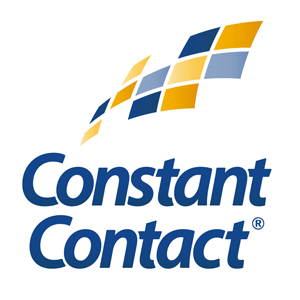Booksellers Find E-mail Marketing Platforms Make Life Easier
- By Liz Button
E-mail marketing platforms like Shelf Awareness, Constant Contact, and Ingram Sendr offer creative ways for booksellers to engage customers who join their online mailing lists.
At the Winter Institute 10 education session “E-mail Marketing Options: Shelf Awareness, Ingram Sendr, Constant Contact,” company representatives and bookseller users discussed the unique qualities of each platform.
All three services allow stores to announce events, promotions, and sales; create or customize e-newsletters; publicize staff picks and reviews; and even share these same messages across a store’s social media network. The newest of the platforms is Ingram Sendr, a free service for use exclusively by customers of Ingram Content Group.
Recognizing that some bookstores don’t have designers or marketers on staff, Ingram created a platform that allows booksellers to quickly and easily create and customize e-newsletters and mailings, said Noah Sanders, senior marketing manager at Ingram Content Group.
Ingram’s platform allows users to choose one of six templates, including one starting from scratch, and customize it by mixing and matching backgrounds, color schemes, and fonts; adding images and links; and positioning content via drag-and-drop editing, Sanders said.
It also enables users to design newsletters and e-fliers that can not only be sent out to a mailing list, but can also be printed out or shared via blogs and social media.
Ingram Sendr has its own system of analytics so booksellers can see who is reading their content and where these clicks are coming from. The analytics offer “really fun infographics that you can totally nerd out to, pie charts and graphs, and all kinds of colorful illustrated data,” Sanders said, “that show you exactly how many people have opened your e-mail, where they are located, what they clicked on, and what e-mail addresses are opening your e-mails.”
After recently completing its beta testing, Ingram Sendr already has 250 bookseller sign-ups, with 160 active users, and Sanders said that this does not include sign-ups by the company’s librarian clients.
The free service is funded by two publisher banner ads for frontlist titles in every mailing. However, booksellers can reposition these widgets on the page.
Rebecca Binkowski, marketing manager for MacIntosh Books & Paper, said Ingram Sendr has been invaluable for the Sanibel, Florida, bookstore. Since MacIntosh began using it last year to send out a weekly e-newsletter announcing new releases and store events, it’s gotten a lot of praise from customers.
Binkowski especially likes how Ingram Sendr translates so easily to the store’s social media network. “It seems to integrate really well with sites we use, like Twitter, Tumblr, and Pinterest,” she said. “It is very easy for me to set something up in Ingram Sendr and push a button and have it go to all our social media sites.”
At the Wi10 education session moderated by Tegan Tigani of Queen Anne Book Company in Seattle, Washington, Shelf Awareness publisher and co-founder Jenn Risko presented the merits of Shelf Awareness for Readers, the company’s popular e-newsletter for consumers, which stores can sign up to have sent out to their mailing lists every Tuesday and Friday for free.
 The twice-weekly publication features book reviews; a section called “Book Candy,” which is comprised of eclectic literary links from around the web; and a list of the week’s 25 best new books curated by Shelf Awareness, Risko said. Many booksellers also receive the company’s daily newsletter for book trade professionals, Shelf Awareness Pro.
The twice-weekly publication features book reviews; a section called “Book Candy,” which is comprised of eclectic literary links from around the web; and a list of the week’s 25 best new books curated by Shelf Awareness, Risko said. Many booksellers also receive the company’s daily newsletter for book trade professionals, Shelf Awareness Pro.
Carol Spurling, co-owner of BookPeople of Moscow in Moscow, Idaho, is an enthusiastic fan of Shelf Awareness for Readers. A big plus, she said, is that booksellers can sign up their entire mailing list and personalize the newsletter so that it looks like it is their own.
“One of the features of the Shelf Awareness newsletter that I like most is the co-branding, where my logo goes out with the newsletter,” Spurling said.
Another customizable feature lets booksellers write biweekly 300-word editorials that, after review by Shelf, are featured at the top of that store’s newsletter. “I frequently use the custom editorial to add my own content to the Shelf Awareness newsletter … and I have been incredibly pleased with the response from my customers,” Spurling said.
Of the content provided by Shelf Awareness, Spurling said, “The reviews and editorial content are independent; it doesn’t feel corporate and canned to me and that comes from [Shelf’s own] small business aspect.
“The buy buttons go straight to my website so people can buy from me directly, and the events feed in the newsletter comes right from my events calendar, so there’s no additional work for me. Everything that happens, happens automatically from work that I have already done for my website.”
To easily update the store’s mailing list, Spurling downloads the list from MailChimp and e-mails it to Shelf Awareness “and they update it regularly,” she said. MailChimp is now mainly used to maintain the store’s mailing list in database form, though she does still use it to send occasional mailings because “people respond to different things.”
Along with ease of transmission and clarity of content, social media integration is an important part of e-mail marketing these days. Constant Contact’s suite of tools features a database that works with social media apps to drive engagement, so small businesses can share with their networks right from the Constant Contact platform.
 Jamie Layton, manager of Duck’s Cottage Coffee & Books in Duck, North Carolina, said Constant Contact is a good fit for her store because she needs to be able to stay in front of her customers year-round, though her business is very seasonal. Duck’s is located in the Outer Banks, a popular summer spot for out-of-state vacationers.
Jamie Layton, manager of Duck’s Cottage Coffee & Books in Duck, North Carolina, said Constant Contact is a good fit for her store because she needs to be able to stay in front of her customers year-round, though her business is very seasonal. Duck’s is located in the Outer Banks, a popular summer spot for out-of-state vacationers.
Layton said she is a big fan of Constant Contact’s social media sharing capabilities. “It lets you schedule an e-mail and tell it that you want to share it on your personal Facebook page, or on your business Facebook page, so it’s one stop and you’re done,” she said.
Layton has been sending e-mails for both Duck’s Cottage and Downtown Books, Duck’s sister location, through Constant Contact since 2006. Like Ingram Sendr, it offers customizable templates and drag-and-drop editing.
For Duck’s, it’s about making seasonal visitors who have returned home “feel like they are still connected to the Outer Banks, so they still know what’s going on,” she said. “And then when they come back, they come in more than once a week or twice a week.”
At a rate of $60 a month for around 2,700 mailing list subscribers, she said, using Constant Contact to communicate with Duck’s large list is also cost-effective.
In addition to Constant Contact, Layton also uses Shelf Awareness for Readers, but is careful not to overwhelm her list. “You don’t want to fill up their mailbox with just stuff,” she said. “You want to set a high bar for quality so it’s not an e-mail they start ignoring all the time.”
Constant Contact expert Aaron Wesley Means, CEO of ACTIVATE Business Solutions in Asheville, North Carolina, agreed that effective e-mail marketing is a lot about “respect[ing] the [mailing] list, respect[ing] the inbox.”
Just as it is with social media, Means said, instead of aggressively selling or pushing, “e-mail marketing in 2015 is really more about getting a chance to get in front of people and getting them to engage with your content, whether that content is directly book-related or just fun, cool, interesting stuff.”

